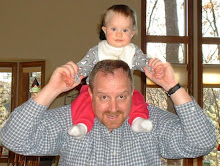Imagine this. 2 posts in 2 days. I just got back from part of my night flying requirements. According to the FAA, I need 10 landings, 3 hours and in that 3 hours, I have to do a cross country. As of tonight, I have 1.9 hours and 8 landings complete. All I have left is 1.1 hours (with a 50 nm cross country leg in there) and 2 landings left.
We started out by leaving TKI headed for Denton (KDTO) which is about 30 nm to the west. I was going to do this on Thursday night but my friend Keith called today and asked if I could come up to Denton and pick him up as he had dropped off a Piper Seneca to be repaired. I tried to get there before the tower closed but as I made my call 10 miles out, the tower said that they were closing down in 3 minutes. I may be able to go a lot faster than a car but 10 miles in 3 minutes is over 200 mph. Not in a 172. I was able to make a beautiful slow turn to join the pattern on a right base and finally put it down without any landing lights. We finally we able to find our turn off and head toward the tower where Keith was waiting.
We picked up our passenger and headed toward Addison. I contacted approach control, got my squawk code and instructions for my approach to Addison. Our controller could not get my call sign right to save his life. He would call out the wrong call sign and I would answer with the right call sign. He paid too much for his clue but I had to live with it because when he handed me off to the tower, they had the wrong call sign. same results with them. Even after we landed and was handed off to ground control, it was still wrong. We dropped Keith off at Atlantic Aviation NORTH (Richard could not get it through his head that we were at Atlantic North, not South) and taxied back to the threshold. I did get to hear the ground controller call a Learjet pilot an idiot so eloquently, he though she was being helpful. I was in the midst of greatness.
We got our clearance to taxi back to 33 and then to take off with a departure to the east. So I did my best to remember how I used to get home after a few too many adult beverages (because I couldn't see the runway because of no landing light). Soon we were airborne and headed toward Rockwall. Rockwall is an interesting little airport. It is 3373 X 45 feet long and when you land to the north, you have to flare an lot more than usual because it slopes up. To top it off, there are some interesting power lines on the north end of the runway. I did a couple of touch and goes (in the dark) and headed back toward McKinney.
By the time we got to McKinney, it was dead and got a straight in approach. This was my absolute best landing ever and had someone there to confirm it. We got to the runway so smooth that even Richard was amazed. We taxied down to Delta and turned off to the Alpha taxi way. The controller found out that we had a red neck airplane. Because the taxi light was out, Richard was using my big flashlight to light up the reflectors so I could see the centerline. It was very funny to hear the controller ask if that was a flashlight we were using on the dash. What can you say. Once a redneck, always a redneck.
My E-Logbook
This post's video is another Cub video. These guys who fly Cubs are an interesting bunch. They can land an airplane where you thought only birds could land. Pretty cool stuff. This is still not a turbine Cub. We'll get to one of those soon enough.
Song Of The Day
8 years ago
